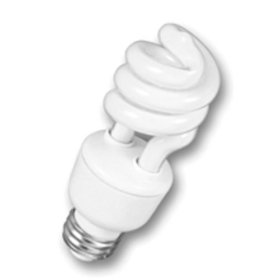 Compact Fluorescent Light Bulbs. This is one product that's been big in the media lately. CFL's are well known as an energy-saving lighting alternative. In February of 2007, Australia went so far as to announce a national phase-out of traditional incandescent light bulbs by 2009. According to Energy Star, each CFL uses 75% less energy than its traditional counterpart, and can save thirty dollars or more over its lifetime. This far outweighs its higher purchase price.
Compact Fluorescent Light Bulbs. This is one product that's been big in the media lately. CFL's are well known as an energy-saving lighting alternative. In February of 2007, Australia went so far as to announce a national phase-out of traditional incandescent light bulbs by 2009. According to Energy Star, each CFL uses 75% less energy than its traditional counterpart, and can save thirty dollars or more over its lifetime. This far outweighs its higher purchase price. The reason I had not included this product before now is that I felt uneasy recommending a light bulb that I know contains mercury, and as of yet does not have a widely-accessible recycling system. I consulted with some friends who graduated from an environmental program at Duke. They gave me some insight:
Retailers are already beginning to establish CFL Recycling Drop-offs, such as Ikea's impressive national recycling program, and the CFL Recycling event hosted by Walmart on June 23rd. Because residential CFL's are guaranteed for last at least two years, and on average last ten times longer than incandescents, by the time most of my CFL's die, such programs will have had years to be fully-established.


No comments:
Post a Comment